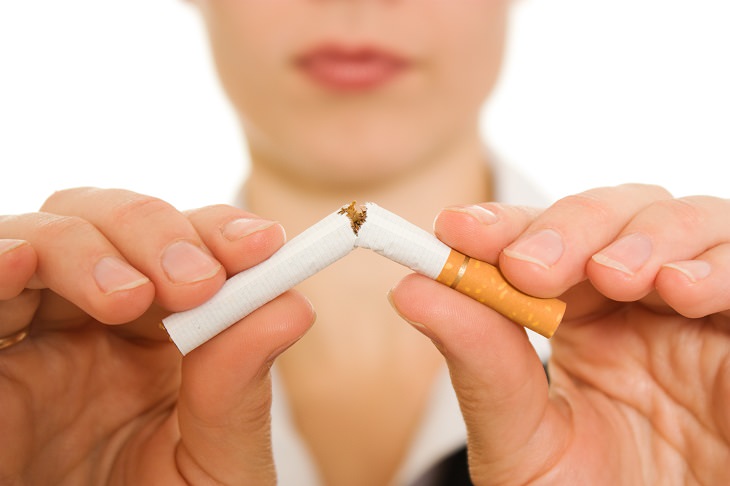

1. Remember the Law of Addiction
This law states that “administration of a drug to an addict will cause re-establishment of chemical dependence upon the addictive substance”. In other words, forget about having a cigarette to “reward” yourself for not smoking, or saying “I’ll just have one”. A lapse usually results in relapse for most quitters. Furthermore, embrace the fact that you’re addicted to nicotine. Doing this in itself is liberating.

Each time you take a puff from a cigarette, the nicotine you inhale releases stored fats and sugars into your bloodstream, meaning you can skip meals with ease and avoid being unable to concentrate, and/or hunger-related anxiety. This will not be possible once you quit smoking, so make your life easier and make sure you eat when you should be eating. Don’t skip breakfast or lunch. Eat less food more frequently.
Drink lots of acidic fruit juice, such as cranberry juice, during the first three days of quitting. This will accelerate the process of your body ridding itself of alkaloid nicotine from your bloodstream, as well as helping to stabilize blood sugars.
5. Avoid all crutches
A crutch is any form of quitting reliance that you lean upon heavily to support your recovery. This could be a person, product, service or activity. If you remove this crutch quickly, you’re highly likely to relapse.
The truth is you don’t need a crutch at all, so don’t let any person or thing become one. Everything you did as a smoker, you are able to do as a non-smoker. What you should do differently is carefully watch your alcohol consumption during the first few days of quitting.
6. Employ techniques to cope with cravings
It’s to be expected that you’ll experience short yet powerful anxiety episodes in certain situations, because you’ve conditioned your mind to expect the arrival of nicotine at certain times of day, in certain places, while doing certain activities, or even when feeling certain emotions. An episode will last up to three minutes.
Don’t hide from the things that trigger cravings – confront them head-on and extinguish them one by one. You will likely find that each time you confront a trigger, your mind will become reconditioned, and you won’t experience cravings in that situation any longer. Embrace each one – it is a beautiful moment of subconscious healing.
Two coping techniques are to breathe slowly and deeply while focusing on your favorite person or thing in order to quieten down the chatter in your mind, or saying your ABCs while associating each letter with one of your favorite things or people.

9. Be prepared to dream about smoking
As your body heals after quitting, tobacco odors being released by your lungs are swept up by bronchial tubes and cilia, coming into contact with your vastly-enhanced sense of smell. If you have a dream about smoking, just interpret it as a sign that you’re healing – nothing else.
10. Remember there are only two good reasons for relapsing
The first is that you’ve made a decision to go back to your previous level of tobacco consumption, speeding up the processes of sickness and death, and the second is that you’ve decided that you really enjoy withdrawals, and want to make the process last forever. If neither of these reasons appeal to you, then you have every reason to stick to the commitment you made to never have another puff again.